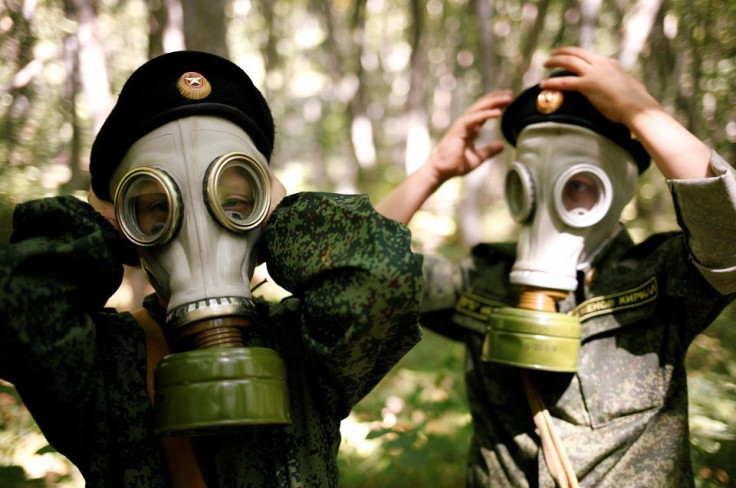World War III Update: 40 million Russians participate in nuclear war drill as Moscow reveals more powerful RS-28 Sarmat super-nukes

As the Cold War between Russia and the US escalates, Russia recently held nuclear bomb-survival drills, amid speculations a cyberattack could be a trigger to a global war. The country upgraded its bomb shelters, tested gas masks and held a rehearsal on how citizens should respond to chemical and nuclear threats in which 40 million Russians took part.
At the same time, Russia released the first image of its new RS-28 Sarmat super-nukes which Russian President Vladimir Putin would launch in 2018 to replace the country’s arsenal of SS-18 Satan weapons. The Sarmat is strong enough to decimate a country as large as France with just one strike, Mirror reports.
The photo was captioned: “In accordance with the Decree of the Russian Government 'On the State Defense Order for 2010 and the planning period 2012-2013', the Makeyev Rocket Design Bureau was instructed to start design and development work on the Sarmat.”

The Russian Ministry of Defense inked in June 2011 a state contract for the development of Sarmat. It is a prospective strategic missile system to create an assured and effective nuclear deterrent for Russia’s strategic forces. Dubbed “Satan 2,” Sarmat could evade radar defences and travel far enough to hit London or the east and west coasts of the US.
It is not just its weapons that Russia is upgrading. Moscow’s civil-defense plans also undergoing an upgrade, according to Andrey Mischenko, deputy head of the Ministry of Defense. The city conducted an inventory of Moscow’s underground spaces to allow the local government to plan for sheltering 100 percent of city residents. Russian TV also aired footage of emergency workers in hazmat suits or checking the ventilation in bomb shelters, Wall Street Journal reports.
Lev Gudkov, head of Levada-Center, a Russian polling group, notes that the threat of a nuclear war keeps Russians non-critical and obedient to Russian leadership. He explains, “Most people believe that the Third World War has begun, but right now we are still in the cold phase of the war, which may or may not turn into a hot war … And during war, you have to support your country’s authorities.”




















